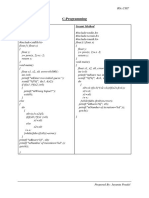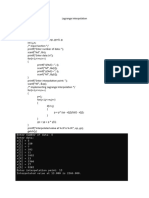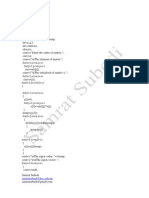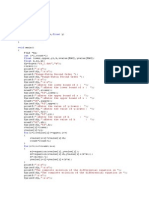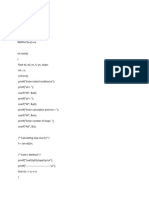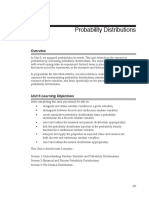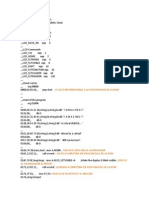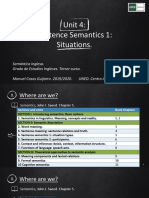0% found this document useful (0 votes)
26 views25 pagesNumerical Method Program
The documents describe numerical integration techniques like Trapezoidal rule, Simpson's 1/3 rule, Simpson's 3/8 rule and Gauss-Legendre integration. C code examples are given to demonstrate implementing these methods to evaluate integrals both analytically and numerically.
Uploaded by
JUKKS PRANKSCopyright
© © All Rights Reserved
We take content rights seriously. If you suspect this is your content, claim it here.
Available Formats
Download as PDF, TXT or read online on Scribd
0% found this document useful (0 votes)
26 views25 pagesNumerical Method Program
The documents describe numerical integration techniques like Trapezoidal rule, Simpson's 1/3 rule, Simpson's 3/8 rule and Gauss-Legendre integration. C code examples are given to demonstrate implementing these methods to evaluate integrals both analytically and numerically.
Uploaded by
JUKKS PRANKSCopyright
© © All Rights Reserved
We take content rights seriously. If you suspect this is your content, claim it here.
Available Formats
Download as PDF, TXT or read online on Scribd
/ 25





